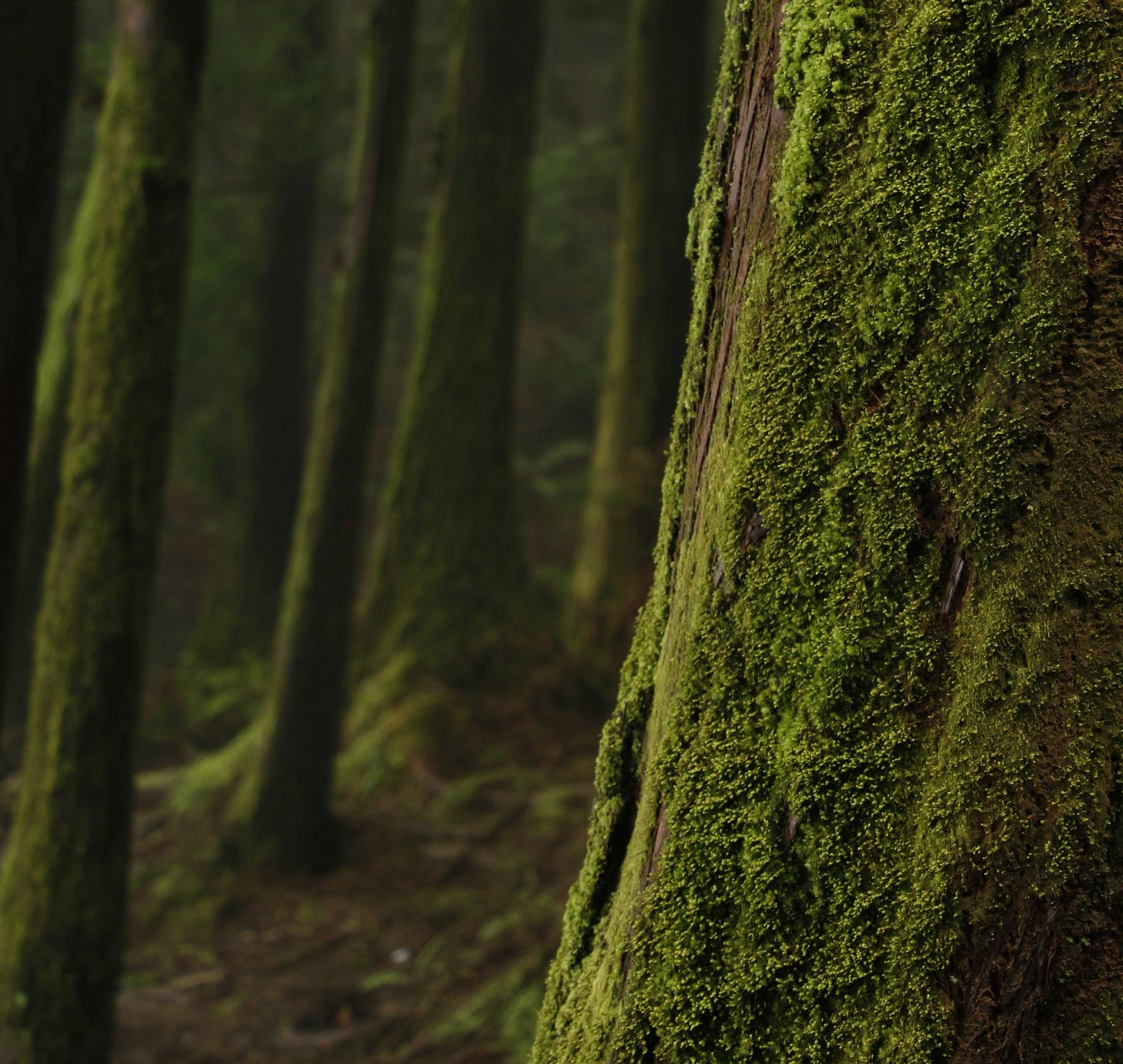
I guess you could group things generally by whether they stand together, or whether they stand apart. It’s an interesting way to look at the world - obviously quite simplistic, but it’s worth doing from time to time.
Because you can tell a lot about a system, a forest, neuronal networks, a people, by whether they’re a or b.
Fir trees are pretty self absorbed beings, they can coexist with others, but they’re also good on their own, due to their insanely deep taproots, which tunnel down toward the earth’s core - the planet is their anchor. In some ways, they remind me of a few friends of mine, content in any capacity and able to adapt to whatever.
Redwoods and Sequoias, though, have extremely shallow root systems compared to their height, sometimes 1:20. In a not-so-strong wind, they’ll topple. So what keeps them in the land of the living?
Each other. These trees form families that are interconnected via overlapping root systems. They create a dense network that allows the entire stand to remain upright during storms.
And for most tree species (including fir trees, no diss intended), and a good many other types of plants, mycorrhizal fungi is the über brain, the underground mental transit system that connects them, trading resources, warning of impending invasive predators, among a lot of other miraculous things. They talk.
We have our own internal transit system. Axons and dendrites in the brain form connections - these are what allow us to develop and retain memories and move through life. “Those that fire together, wire together.” Our brains devote a huge amount of real estate to map connections with other humans as well as connections with the rest of the world. We are as strong as our connections, no doubt about it. And connections fade if we don’t stoke those tiny yet extremely important synapses from time to time.
There’s another aspect to this that is becoming more apparent to me - by enmeshing ourselves in the networks we really care about, we create a permanent home for ourselves, and when we’ve vanished from this corporeal sphere, there is a remnant, an echo of us that remains. It’s one of the few ways we escape mortality, even if only that we live on in the memories of those who have known us.
Then again, there’s that ageless argument about whether we’re simply bodies or also souls, and is there anything beyond these few decades we’re allotted. I’ve talked about that in another post. Here I’m focused on what to do with these ridiculously flimsy carbon shells.
Are we being good neighbors right now? Take a moment and think about your circles of friends, family, co-workers, acquaintances. Do you feel there is an underlying network of communication, and resource sharing happening? We, like almost every flora or fauna on this planet, are geared to work within a group setting. Because life out there can get very scary if you’re on your own, and the rock you’re standing on is likely to be wiped clean by the next big storm.
I’ve been thinking a great deal about connection lately, as I’m sure many have. Life has unraveled a bit, our ends are frayed, and we’re wondering if the whole sweater is going to come undone. We seem… shopworn.
But there is a way around that. Even if you do nothing at the moment other than dwell on the connections you have, and map ways to genuinely bolster them so that they’re stronger, able to withstand the terrible winds of change that threaten to blow us straight to hell - you and yours - we, will stand. In some ways, there is no you. There is only we. As a species, we’d do well to remember that.
And you will never lose you by being part of we.





This is it. I’ve been calling my local friends. It’s just that easy. Let’s meet for coffee.
Thanks for stopping by a recent post which led me here. Seems we share much in common and I look forward to reading more. If you don’t mind, here’s a sign of some overlap.
https://substack.com/@louj1/note/c-86318408?r=270xom&utm_medium=ios&utm_source=notes-share-action